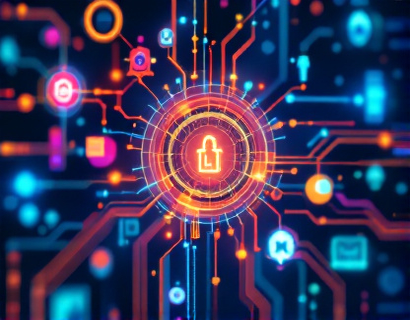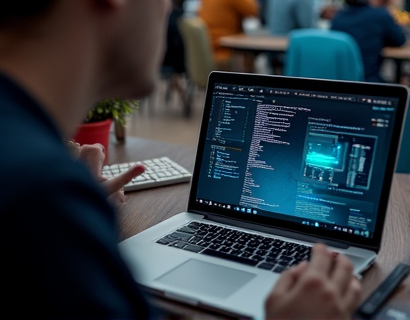Ethereum Layer 2: 2025 Insights for Developers and Enthusiasts on Scalability and Interoperability
As the Ethereum ecosystem continues to evolve, Layer 2 solutions have emerged as a critical component in addressing scalability and interoperability challenges. This comprehensive guide aims to provide developers and enthusiasts with essential insights and updates on the latest Layer 2 technologies, helping them navigate the dynamic and rapidly changing landscape of Ethereum.
Layer 2 solutions are designed to enhance the performance of the Ethereum network by processing transactions off the main chain, thereby reducing congestion and lowering transaction fees. These solutions include state channels, sidechains, and rollups, each with its unique approach and benefits. Understanding the intricacies of these technologies is crucial for anyone looking to stay ahead in the Ethereum ecosystem.
Understanding Rollups
Rollups are one of the most promising Layer 2 solutions, offering significant improvements in scalability and cost efficiency. There are two main types of rollups: Optimistic Rollups and ZK Rollups.
Optimistic Rollups bundle multiple transactions into a single transaction on the main Ethereum chain, assuming all transactions are valid. If any transaction is found to be invalid, the rollup can be challenged, and the fraudulent transaction is reversed. This approach significantly reduces the load on the main chain while maintaining security through a challenge period.
ZK Rollups, on the other hand, use zero-knowledge proofs to bundle and verify transactions off-chain. These proofs ensure that all transactions are valid without revealing the transaction details, providing a higher level of privacy and security. ZK Rollups are generally more complex but offer faster finality and lower fees compared to Optimistic Rollups.
Both types of rollups have gained traction in the Ethereum community, with several projects and platforms already implementing them. For developers, understanding the differences between Optimistic and ZK Rollups is essential for choosing the right solution for their applications.
State Channels: A Closer Look
State channels are another Layer 2 solution that enables multiple transactions to occur off the main chain, with the final state being submitted to the Ethereum network once the channel is closed. This method is particularly useful for applications that require high throughput and low latency, such as decentralized finance (DeFi) protocols and gaming platforms.
State channels work by allowing parties to execute a series of transactions privately, with only the initial deposit and final state being recorded on the main chain. This reduces the number of transactions on the main chain, thereby lowering fees and increasing transaction speeds. However, state channels require careful management of trust and liquidity, as participants must lock up funds during the channel's operation.
For developers, state channels offer a powerful tool for building scalable applications. However, the complexity of implementing and managing state channels requires a deep understanding of the underlying mechanics and potential risks.
Interoperability: Bridging the Gap
Interoperability is a key aspect of the Ethereum ecosystem, enabling different blockchain networks to communicate and transfer assets seamlessly. Layer 2 solutions play a crucial role in enhancing interoperability, allowing for cross-chain transactions and collaboration between various platforms.
One prominent example of interoperability in Layer 2 is the use of cross-links and atomic swaps. Cross-links enable the transfer of assets between different blockchains, while atomic swaps allow for direct, trustless exchanges of cryptocurrencies without the need for intermediaries. These technologies are essential for building a truly interconnected decentralized ecosystem.
Several Layer 2 projects are focusing on interoperability, such as Polygon's XCM (Cross-Chain Message Passing) and Binance Smart Chain's XCross. These solutions facilitate seamless asset movement and interaction between Ethereum and other blockchains, expanding the potential use cases and adoption of decentralized applications.
Challenges and Considerations
While Layer 2 solutions offer significant benefits, they also come with their own set of challenges and considerations. Security remains a top concern, as off-chain transactions must be trustworthy and resistant to attacks. Developers must thoroughly test and audit Layer 2 implementations to ensure they meet the required security standards.
Another challenge is the complexity of integrating Layer 2 solutions into existing applications. This requires a deep understanding of the underlying technologies and protocols, as well as the ability to manage cross-chain interactions and state synchronization.
Additionally, the governance and maintenance of Layer 2 protocols are critical factors. Decentralized governance models can help ensure the long-term sustainability and adaptability of these solutions, but they also introduce their own set of challenges in terms of decision-making and community alignment.
Future Trends and Innovations
The Layer 2 space is rapidly evolving, with ongoing research and development leading to new innovations. One area of focus is the integration of Layer 2 solutions with emerging technologies such as sharding and plasma, which can further enhance scalability and performance.
Another trend is the development of universal Layer 2 protocols that can work across multiple blockchains, promoting greater interoperability and ecosystem integration. Projects like Cosmos and Polkadot are at the forefront of this effort, aiming to create a network of interconnected blockchains.
Moreover, the adoption of Layer 2 solutions is expected to grow as more developers and businesses recognize their potential to reduce costs and improve user experiences. As the ecosystem matures, we can anticipate more user-friendly tools and frameworks that simplify the implementation and management of Layer 2 technologies.
Conclusion
Layer 2 solutions are a vital component of the Ethereum ecosystem, addressing scalability and interoperability challenges and paving the way for a more robust and user-friendly decentralized environment. Whether you are a developer looking to build scalable applications or an enthusiast interested in the future of blockchain, understanding Layer 2 technologies is essential.
By staying informed about the latest developments and best practices, you can leverage Layer 2 solutions to create innovative and efficient decentralized applications. The future of Ethereum is bright, and Layer 2 solutions will play a crucial role in shaping its trajectory.










































